What is an AI agent?
An AI agent is an autonomous software entity designed to perform tasks by perceiving its environment, processing information, and taking actions to achieve specific goals. An AI agent typically comprises three core components:
- Intelligence: The large language model (LLM) that drives the agent’s cognitive capabilities, enabling it to understand and generate human-like text. This component is usually guided by a system prompt that defines the agent’s goals and the constraints it must follow.
- Knowledge: The domain-specific expertise and data that the agent leverages to make informed decisions and take action. Agents utilize this knowledge base as context, drawing on past experiences and relevant data to guide their choices.
- Tools: A suite of specialized tools that extend the agent’s abilities, allowing it to efficiently handle a variety of tasks. These tools can include API calls, executable code, or other services that enable the agent to complete its assigned tasks.
What are the three core components of an AI agent?
What is RAG?
Retrieval-Augmented Generation (RAG) is an AI technique that enhances large language models (LLMs) by integrating relevant information from external knowledge bases. Through semantic similarity calculations, RAG retrieves document chunks from a vector database, where these documents are stored as vector representations. This process reduces the generation of factually incorrect content, significantly improving the reliability of LLM outputs.\cite{RAG}
A RAG system consists of two core components: the vector database and the retriever. The vector database holds document chunks in vector form, while the retriever calculates semantic similarity between these chunks and user queries. The more similar a chunk is to the query, the more relevant it is considered, and it is then included as context for the LLM. This setup allows RAG to dynamically update an LLM’s knowledge base without the need for retraining, effectively addressing knowledge gaps in the model’s training data.
The RAG pipeline operates by augmenting a user’s prompt with the most relevant retrieved text. The retriever fetches the necessary information from the vector database and injects it into the prompt, providing the LLM with additional context. This process not only enhances the accuracy and relevance of responses but also makes RAG a crucial technology in enabling AI agents to work with real-time data, making them more adaptable and effective in practical applications.
How does Retrieval-Augmented Generation (RAG) improve LLM responses?
What is Agent Memory?
AI agents, by default, are designed to remember only the current workflow, with their memory typically constrained by a maximum token limit. This means they can retain context temporarily within a session, but once the session ends or the token limit is reached, the context is lost. Achieving long-term memory across workflows—and sometimes even across different users or organizations—requires a more sophisticated approach. This involves explicitly committing important information to memory and retrieving it when needed.
Agent Memory with blockchain:
XTrace – A Secure AI Agent Knowledge & Memory Protocol for Collective Intelligence – will leverage blockchain as the permission and integrity layer for agent memory, ensuring that only the agent’s owner has access to stored knowledge. Blockchain is especially useful for this long persistent storage as XTrace provides commitment proof for the integrity of both the data layer and integrity of the retrieval process. The agent memory will be securely stored within XTrace’s privacy-preserving RAG framework, enabling privacy, portability and sharability. This approach provides several key use cases:
Stateful Decentralized Autonomous Agents:
- XTrace can act as a reliable data availability layer for autonomous agents operating within Trusted Execution Environments (TEEs). Even if a TEE instance goes offline or if users want to transfer knowledge acquired by the agents, they can seamlessly spawn new agents with the stored network, ensuring continuity and operational resilience.
XTrace Agent Collaborative Network:
- XTrace enables AI agents to access and inherit knowledge from other agents within the network, fostering seamless collaboration and eliminating redundant processing. This shared memory system allows agents to collectively improve decision-making and problem-solving capabilities without compromising data ownership or privacy.
XTrace Agent Sandbox Test:
- XTrace provides a secure sandbox environment for AI agent developers to safely test and deploy their agents. This sandbox acts as a honeypot to detect and mitigate prompt injection attacks before agents are deployed in real-world applications. Users can define AI guardrails within XTrace, such as restricting agents from mentioning competitor names, discussing political topics, or leaking sensitive key phrases. These guardrails can be enforced through smart contracts, allowing external parties to challenge the agents with potentially malicious prompts. If a prompt successfully bypasses the defined safeguards, the smart contract can trigger a bounty release, incentivizing adversarial testing. Unlike conventional approaches, XTrace agents retain memory of past attack attempts, enabling them to autonomously learn and adapt to new threats over time. Following the sandbox testing phase, agents carry forward a comprehensive memory of detected malicious prompts, enhancing their resilience against similar attacks in future deployments.
How to create a Personalized AI agent?
To create an AI agent with XTrace, there are three main steps to follow:
- Define the Purpose: Determine the specific tasks and goals the agent will accomplish.
- Choose the AI Model: Select a suitable LLM or other machine learning models that align with the agent’s requirements.
- Gather and Structure Knowledge: Collect domain-specific data and organize it in a way that the agent can efficiently use.
- Develop Tools and Integrations: Incorporate APIs, databases, or other services that the agent may need to interact with.
How to create a Private Personalized AI agent with XTrace?
XTrace can serve as the data connection layer between the user and the AI agents. Users will be able to securely share data from various apps into the system to create an AI agent that is aware of the user’s system. By leveraging XTrace’s encrypted storage and access control mechanisms, AI agents can be personalized without compromising user privacy. Key features include:
- Seamless Data Integration: Aggregating data from multiple sources securely.
- Granular Access Control: Ensuring only authorized AI agents can access specific data.
- Privacy-Preserving Computation: Enabling AI agents to learn from user data without exposing it.
- Automated Insights: Leveraging AI to provide personalized recommendations based on securely stored data.
- User Ownership: Empowering users with full control over their data and how it is used.
How do we use XTrace private RAG for (L)Earn AI🕺?
- We send learning materials in LLM friendly format to LNC RAG at XTrace
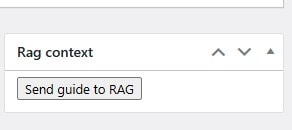
- Once (L)Earn AI🕺 gets the question, first it talks to private RAG and retrieve relevant information
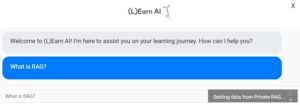
- The LLM hosted at NEAR AI infrastructure generates a response based on both its pre-trained knowledge and the retrieved information!
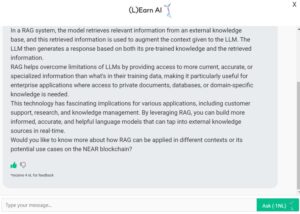
- Learners are encouraged to provide feedback and get 4nLEARNs to improve (L)Earn AI🕺 to work better for NEAR community!
Updated: February 24, 2025
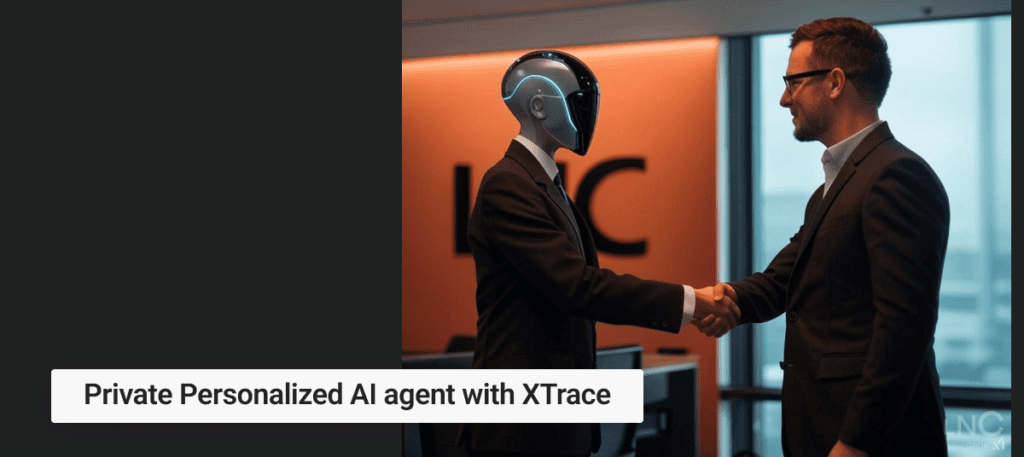


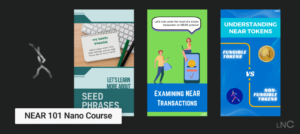

Top comment
The XTrace can serve as the data connection layer, facilitating communication between users and AI agents.
I'm excited to see how XTrace private RAG is being utilized to enhance the (L)Earn AI experience! The idea of sending learning materials in an LLM-friendly format to the RAG and then retrieving relevant information to inform AI responses is genius. I'm curious to know more about the type of feedback learners are encouraged to provide and how that feedback is used to improve the AI. Is there a way to track the progress and effectiveness of the 4nLEARNs system? Additionally, how does the NEAR community plan to expand the capabilities of (L)Earn AI in the future?
This explanation of how XTrace private RAG is used for (L)Earn AI is fascinating! I love how the process involves a seamless collaboration between the LNC RAG, private RAG, and the LLM hosted on NEAR AI infrastructure. The fact that learners can provide feedback and earn 4nLEARNs to improve the AI is a great incentive to encourage community engagement. I'm curious to know more about how the feedback mechanism works and how it impacts the AI's performance over time. Can anyone share more insights on this?
This concept of creating a private personalized AI agent with XTrace is revolutionary! The ability to securely integrate data from various apps and maintain control over how it's used is a game-changer. I'm particularly excited about the granular access control feature, which ensures that only authorized AI agents can access specific data. It's about time we, as users, regain ownership of our personal data. One question I have is, how will the AI agents be trained to provide accurate and unbiased insights without compromising user privacy? Can't wait to see this technology in action and experience the benefits firsthand!
This article on RAG has got me thinking – what's the potential for RAG to revolutionize the field of education? Imagine AI-powered learning tools that can provide students with accurate, up-to-date information on a vast range of topics, all while adapting to their individual learning needs. By leveraging RAG's ability to dynamically update its knowledge base, we could create more effective and engaging educational resources that stay current with the latest research and discoveries. The possibilities are endless, and I'd love to see more exploration into the applications of RAG in edtech.
Fascinating read! I particularly appreciate the emphasis on defining the purpose of the AI agent before choosing the model. It's crucial to have a clear understanding of what we want the agent to achieve, rather than just throwing tech at the problem. I'd love to know more about the types of domain-specific data that are ideal for structuring knowledge. Are there any specific tools or platforms that the authors would recommend for organizing and integrating this data? Additionally, how do we ensure that the agent's development is aligned with ethical considerations and transparency?
Fascinating concept! The idea of creating a private, personalized AI agent with XTrace that prioritizes user privacy and control is a game-changer. The seamless data integration and granular access control features ensure that users can securely share data from various apps, while maintaining agency over what information is accessed. I'm particularly intrigued by the privacy-preserving computation aspect, as it enables AI agents to learn from user data without compromising confidentiality. What I'd love to know more about is how the automated insights will be presented to users – will it be through a dashboard or notifications? And will users have the option to opt-out of certain recommendations?
Wow, this is a game-changer! I never thought that augmenting language models with external knowledge bases could have such a significant impact on the accuracy and reliability of AI outputs. The ability to dynamically update an LLM's knowledge base without retraining is a major breakthrough, especially in fields where real-time data is crucial. I'm curious to know how RAG addresses potential biases or inaccuracies in the retrieved document chunks – do the vector databases have built-in filters or checks to ensure the quality of the information? I'd love to hear more about the applications of RAG in real-world scenarios, such as healthcare or finance, where accuracy is paramount.
I'm really excited to see how (L)Earn AI is leveraging XTrace private RAG to create a more personalized and effective learning experience for the NEAR community. The feedback loop where learners can provide input and receive 4nLEARNs to improve the AI is a game-changer. I'm curious to know more about the LLM friendly format and how it's tailored to ensure seamless interaction with the private RAG. Also, how does the feedback mechanism ensure that the AI is learning from diverse perspectives and not perpetuating biases?
Fascinating to see how XTrace private RAG enables (L)Earn AI to provide more accurate responses! I love how learners are incentivized to provide feedback, which not only improves the AI's performance but also fosters a sense of community engagement. A question though – how does the private RAG ensure the retrieved information is accurate and up-to-date, especially considering the dynamic nature of the NEAR community? Are there any mechanisms in place to detect and mitigate potential biases in the responses generated by the LLM?
I'm impressed by the potential of XTrace to revolutionize AI agent collaboration and knowledge sharing while ensuring data integrity and privacy. The concept of a decentralized, blockchain-based memory protocol opens up exciting possibilities for collective intelligence and autonomous decision-making. I'm curious to see how XTrace will address the potential scalability limitations of blockchain technology, especially when it comes to handling large amounts of agent memory data. Also, how will the platform balance the need for agent adaptability and learning with the risk of bias and manipulation through malicious prompts? Overall, XTrace seems to be taking a crucial step towards creating more secure, trustworthy, and cooperative AI systems.
Fascinating insight into the limitations of AI agents! It's remarkable how they can maintain context within a session, but struggle to retain information beyond that. I can see how this would create challenges for complex tasks that require long-term memory. The idea of explicitly committing important information to memory and retrieving it as needed raises questions about how to prioritize what information to store and how to ensure seamless retrieval. What kind of architecture or algorithms would be required to enable this kind of sophisticated memory management? Looking forward to learning more about the possibilities and limitations of agent memory.
Fascinating to see how XTrace private RAG is being utilized to power (L)Earn AI! I'm impressed by the seamless integration of LLM friendly formats and the NEAR AI infrastructure. The feedback loop with learners providing 4nLEARNs to improve the AI is a game-changer. I'm curious to know more about how the LLM generates responses based on both pre-trained knowledge and retrieved information. Are there any plans to open-source the (L)Earn AI framework or make it available for other communities to build upon?